The ESA selected five potential sites on the comet Churyumov-Gerasimenko for the landing of the Philae / Rosetta probe
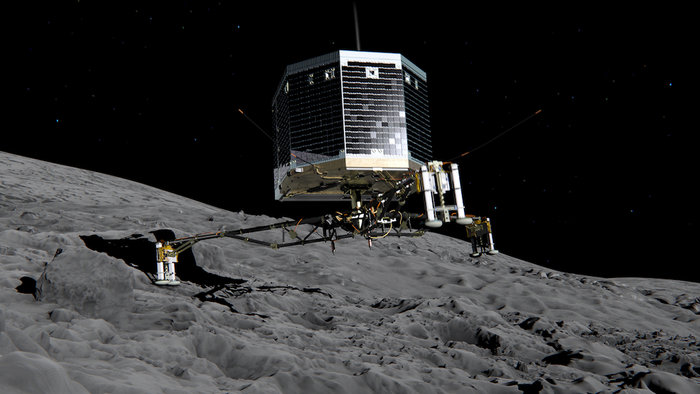
Probably, landing of a probe will look exactly like this.
November is getting closer, which means that the date of the Philae probe landing on the surface of comet Churyumov-Gerasimenko is getting closer. We all look forward to this moment, but it’s not long to wait, especially since the ESA (European Space Agency) is actively working on the choice of the landing site for the probe.
Here the error is simply unacceptable, any, the smallest, error threatens the failure of the entire mission. Of course, the Rosetta station itself has already received a huge amount of data about the comet (this data is laid out by the agency a month or two after receiving it), but the greatest hope rests on the Philae probe.
')
That probe will be able to clarify the composition of the substance of a comet, giving scientists another batch of interesting information, which, as many hope, will clarify the formation of comets and the conditions of formation of our solar system.
So, now five potential landing sites have been selected. When choosing, scientists were guided by the following criteria:
- availability of solar lighting, 6 hours a day or more;
- reliable communication with the device;
- no danger of overheating;
- landing safety
There are other criteria, but these are the main ones.
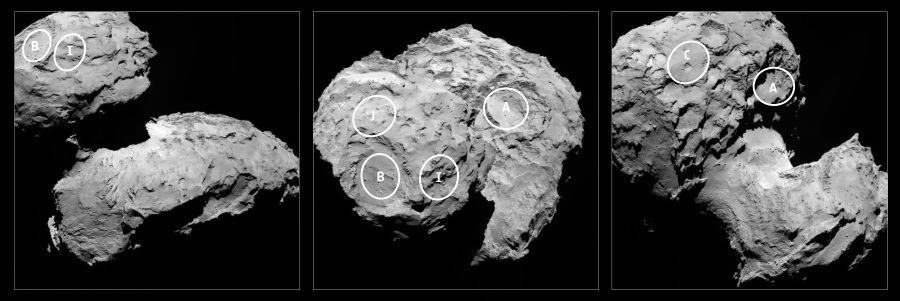
Total identified five "candidates":
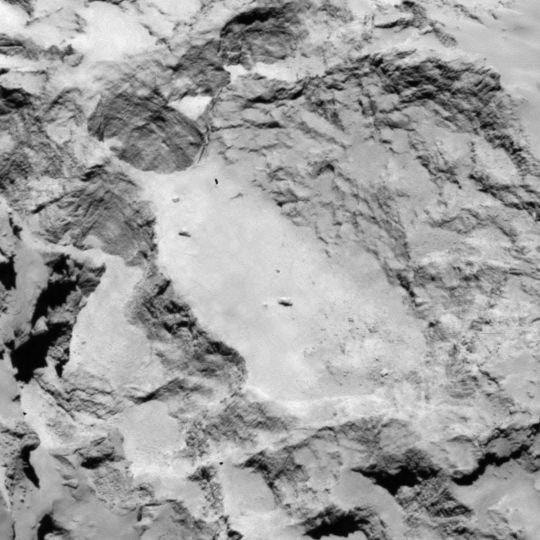
Site A. This site is located on the cometary “hemisphere”. A better shot is required for a detailed site assessment. In this picture, small parts, funnels and bumps may not be visible.

Playground B is located in a crater-like structure on the cometary “hemisphere”. Everything is fine here, but scientists have not fully clarified the situation with the lighting of this site in the long term. Need a photo in the best resolution. Among other things, boulders are visible, which are dangerous.

Site C is located on the larger "hemisphere." The surface is not very flat, there are funnels, and protuberances and other elements. Again, a higher quality image is required.
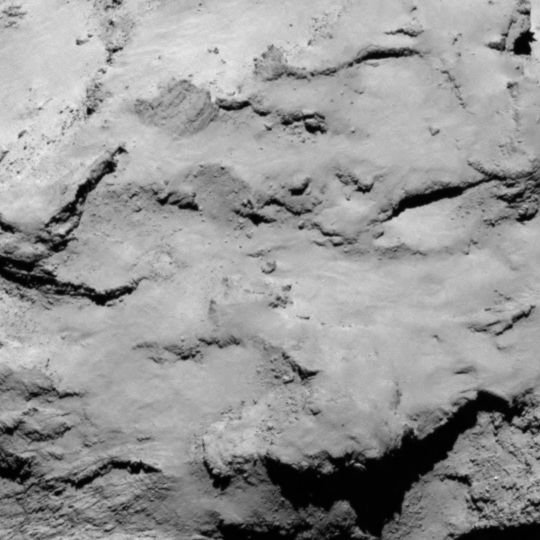
Site I is relatively flat, located on the smaller "hemisphere". As in the previous cases, you need a better picture. It is unclear how the illumination of the site will change over time.
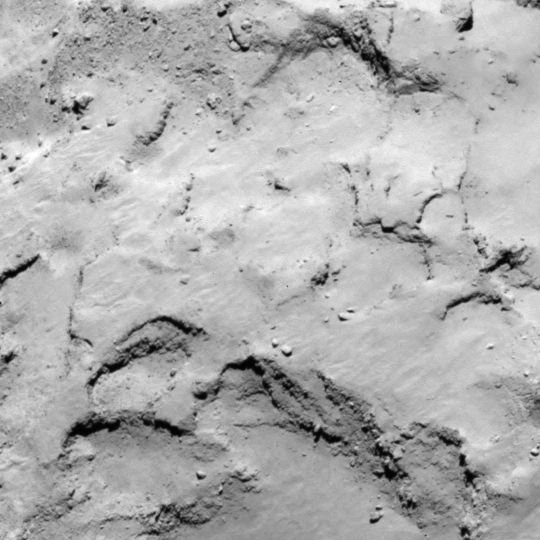
Site J. This site is similar to the previous one. The problems are the same as in the previous case.
Now scientists are actively working to evaluate each of the sites, and are trying to choose the most convenient and safe place for landing the probe. By the way, soon the Rosetta station should approach the comet at a distance of 50 kilometers (now it is about 100), so scientists hope to get even more detailed photos of potential sites.
By September 14, Rosetta will be even closer to the body of the comet - at a distance of only 20-30 kilometers, so the images of the comet will be even better. Scientists will be able to choose the main and spare sites.
The estimated date of the landing of the probe is 11 November, and the site must be selected before October 12. Of course, all this work is very difficult, you need to take into account a whole range of third-party factors. But scientists are ready for this.
Via esa
Source: https://habr.com/ru/post/234691/
All Articles